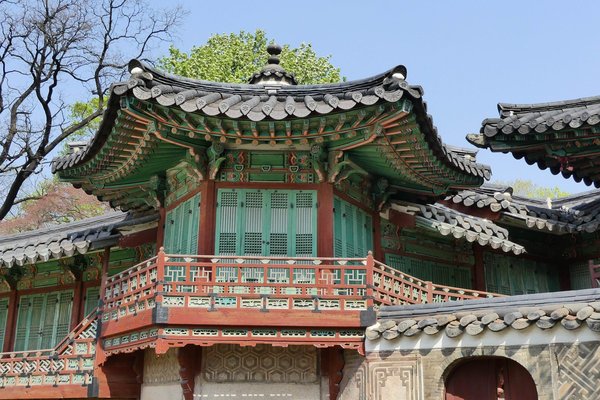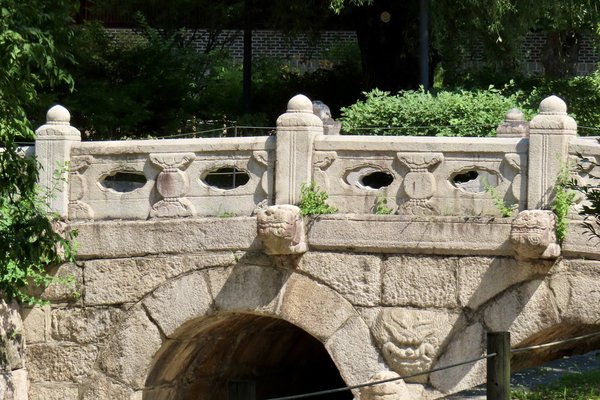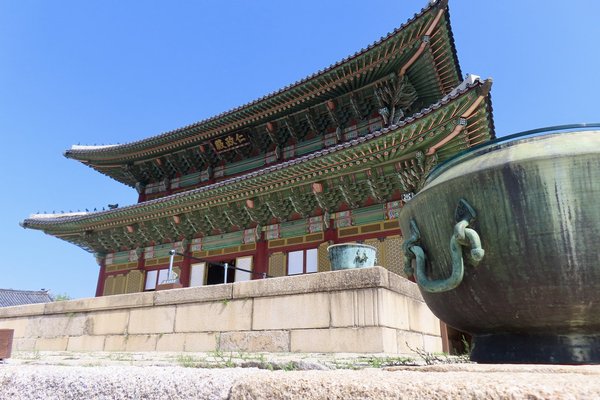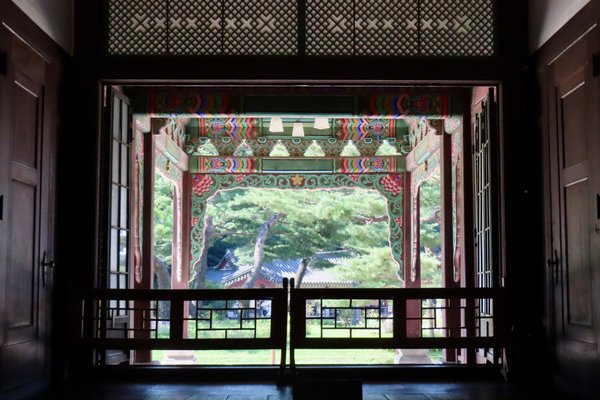Republic of Korea
Changdeokgung Palace Complex
The Changdeokgung Palace Complex has been influential for its architecture and garden design.
Based on 'pungsu' (Korea's System of Geomancy or Feng Shui) and Confucian principles, the buildings are harmonized with the natural setting. This is the oldest of Seoul's Royal Palaces. Attached to the palace is the "Secret Garden", a beautiful landscape garden to be used by the Royal Family only. You can find especially imported trees, pavilions, pagodas, stone bridges and ponds.
Community Perspective: Considered one of South Korea's highlights, but also a bit sterile. Kyle addresses the authenticity questions it raises. The Secret Garden is limited to access by guided tour, which is best reserved online a few days beforehand.
Site Info
Official Information
- Full Name
- Changdeokgung Palace Complex (ID: 816)
- Country
- Republic of Korea
- Status
-
Inscribed 1997
Site history
History of Changdeokgung Palace Complex
- 1997: Inscribed
- Inscribed
- Type
- Cultural
- Criteria
- ii
- iii
- iv
Links
- UNESCO
- whc.unesco.org
- Official
-
- royal.khs.go.kr — Changdeokgung World Cultural Heritage
All Links
UNESCO.org
- whc.unesco.org — whc.unesco.org/
Official Website
- royal.khs.go.kr — Changdeokgung World Cultural Heritage
News Article
- Aug. 8, 2018 thejakartapost.com — Changdeokgung throws open gates for nighttime tour
- March 15, 2010 english.chosun.com — Changdeok Palace to Open for Business Meetings
Community Information
- Community Category
- Secular structure: Palace
Travel Information
One million visitors or more
Guided Tour Only
WHS Commandments Stars
All 10 criteria, plus an individual paper ticket includes the name, date, price, and …
Seoul hotspot
Recent Connections
-
No Map
-
WHS Commandments Stars
All 10 criteria, plus an individual pap…
-
Perfect Inscriptions
1997
Connections of Changdeokgung Palace Complex
- Individual People
-
-
Hendrick Hamel
Hamel visited court numerous times to entertain or speak to King Hyojong the 17th Ruler of Joseon -
Homer B. Hulbert
"The 6th of June (1895) witnessed a great celebration in Seoul which has gone down in history as Independence Day A fete was held in the Old Palace (Changdeokgung) which exceeded in brilliancy any similar demonstration since the opening of Korea to foreign relations." A photograph captioned "A picturesque nook in the Old Palace" is included on the adjacent page. - The Passing of Korea by Homer Hulbert (pg. 132) -
Gertrude Bell
Photo taken May 1903 -
Toyotomi Hideyoshi
Changdeokgung Palace and Jongmyo Shrine were both razed during Hideyoshi's disastarous campaign to conquer Korea and China in the late 16th century. Both sites were rebuilt following the end of the Imjin War.
-
- Geography
-
-
Located in a Capital City
Seoul (Capital of South Korea) -
Contiguous National Sites
Changdeokgung Palace Complex & Jongmyo Shrine
-
- Trivia
-
-
Dragon
"If you delve further into the palace grounds, you'll come upon the royal residence buildings. You can distinguish the king's bedchamber from the queen's by the former's roof ridgeline that's called yongmaru, or the dragon's spine. The dragon was the symbol of the king." - discoveringkorea.com -
One million visitors or more
"Of the four palaces, Gyeongbok attracted the most visitors, with 2.97 million, followed by Changdeok with 897,000, Deoksu with 703,000 and Changgyeong with 475,000." January to June 2016 (1/2 year) -
WHS within walking distance
Seoul -
Built or owned by Japanese
In 1920 The Japanese regime destroyed parts of the complex and a Japanese building was constructed in the palace courtyard. -
Role of Women
Royal Family used the garden exclusively along with court women
-
- History
-
-
Eunuchs
-
Treaties
Japan-Korea Annexation Treaty of 1910 "In modern Korea, the treaty is also commonly called "Hanil Hapbang Neugyak," which simply means a coerced (and hence invalid) treaty." (wiki) Injeong-jeon, main hall of Changdeokgung - "The annexation treaty between Korean and Japan was signed here at Injeong-jeon in 1910, putting an end to the Joseon Dynasty." - A field Guide to History: Seoul written by Korea Cultural and Historical Survey Society. (2007) Excerpt pg. 139 -
Insurrections
Imo Incident - "Dissatisfaction with the Korean government was the initial focus of the violence. Some government officials were killed by the rioters. Homes of high government ministers were destroyed and Changdeok Palace was occupied by soldiers. The rioting general population of Seoul swelled the ranks of the dissatisfied army units. In the midst of the chaos, the regent father of the king, Daewongun, took power and tried to re-establish order. He supported soldiers' complaints." - wiki -
Joseon Dynasty
-
Coronation Locations
For most of the Korean Joseon Dynasty -
Contains significant structures from the 20th Century
"The last building to be added was the New Sonwonjon Shrine, which was constructed in 1921 to house the ancestral royal portraits. Originally sited beside the Injongjon (throne hall), it was moved during the Japanese occupation to a less important location in the north-east corner of the compound." - AB Evaluation
-
- Ecology
-
-
Notable Trees
Chinese Juniper of Changdeokgung Palace (National Monument) "The Chinese juniper is believed to be 750 years old. It is 12m in height and 5.9m in circumference at the widest part of its trunk. Juniper wood is highly aromatic and it used to make incense for rituals. It is assumed that this tree was related to the ancestral rituals held at Seonwonjeon Shrine to the East, where portraits of former kings were enshrined. This tree is depicted in Donggwoldo (Painting of the Eastern Palaces), which dates to around the 1830's." - Panel description on site
-
- Architecture
-
-
Geomancy
"Situated at the foot of a mountain range, it was designed to embrace the topography in accordance with pungsu principles, by placing the palace structures to the south and incorporating an extensive rear garden to the north called Biwon, the Secret Garden. Adaptation to the natural terrain distinguished Changdeokgung from conventional palace architecture." (UNESCO) -
Glazed tiles
Seonjeongjeon still has the old-style glazed blue tiles, that once were common in Korea. Now Changdeokgung is one of the only places in Korea these tiles can still be found -
Wooden architecture
-
- Damaged
-
-
Destroyed during invasion
Korea's Changdeokgung and Jongmyo Shrine by Japanese Invasion in 1592
-
- World Heritage Process
- Religion and Belief
-
-
Phoenix
Changdeokgung's Throne Hall, centered in the staircase is a carving of a phoenix, representing authority and the king -
Confucianism
The architectural style of Changdeokgung Palace, demonstrate features of simplicity and frugality, reflecting the Confucian ideology of the Joseon Dynasty.
-
- Human Activity
-
-
Man-made Terraces
"The garden was landscaped with a series of terraces planted with lawns, flowering trees, flowers, a lotus pool and pavilions set against a wooded background." - AB Document (Unesco Description) -
Silk Manufacture
"The country planted and cultivated mulberry trees in the back gardens of palaces and encouraged sericulture among the general public. The Annals of King Seongjong records that the king spoke to the Royal Secretariat about the importance of sericulture and ordered them to plant mulberry trees in the back garden. In addition, the Annals of King Seongjong record that the king held a "Chinjamrye" ceremony in the back garden to pay tribute to the god of sericulture. Silkworm farming has been a valuable national industry since ancient times, and the royal family has placed great importance on mulberry trees. In 1911, the Government-General of Korea made the left Seohyanggak of the rear garden of Changdeokgung Palace into a silkworm farm and held a silkworm rite. There are records that silkworm rites were held at Juhapnu on June 17, 1925, June 15, 1929, and June 26, 1939." - Korean Heritage Service (KHS)See en.namu.wiki
-
- Constructions
-
-
Notable Bridges
Geumcheongyo Bridge -
Thrones
Injeongjeon Throne Hall, built for the kings of the Joseon Dynasty -
Historic Pharmacies
The Naeuiwon (Infirmary) "It's here that the royal doctors of the court took care of the King and his family. It was also called "Yakbang", which literally means a pharmacy. In the Seongjeonggak, the main building of the Naeuiwon complex, there are some tables. Which mean "do one's best to take care of the king and his family". They were written by King Jeongjo himself." - enlish.cha.go.kr -
Sundial
Angbuilgudae (Pedestal of Hemerspherical Sundial) "Total of 10 Angubuilgu still exist. They can be found in Changgyeonggung Palace, Changdeokgung Palace, Gyeongbokgung Palace, and Deoksugung Palace." - Korean Cultural Heritage 2 (2007) pg 169
-
- WHS on Other Lists
-
-
Memory of the World
The "Donguibogam, Principles and Practice of Eastern Medicine" text was first printed (1610-13) and kept at the Palace Dispensary (Naeui-won) within Changdeokgung palace. In the wake of the Imjin War, King Seongju commissioned Heo Jun to complete the important work to promote the psychological, physical, and social health of the populace. - (Information from "Korean Documents on Unesco's Memory of the world Register" 2009) The "Seungjeongwon Ilgi, the Diaries of the Royal Secretariat" was housed in the Royal Secretariat office. The building is located in Changdeokgung palace, between the Royal audience hall and council hall. The diary entries were entered daily and left an official record of the Joseon dynasty. - (Information from "Korean Documents on Unesco's Memory of the world Register" 2009) -
Cultural WHS set within an IUCN recognised protected area
Changdeokgung Rear Garden Ecosystem and Landscape Conservation Area, IUCN category IV (Habitat/Species Management Area) -
UNESCO Intangible Cultural Heritage Lists
Daemokjang, traditional wooden architecture - "Wooden architecture has a long history in Korea. Among the best examples are Changdeokgung Palace and Bulguksa Temple, which are inscribed on the UNESCO World Heritage List. These architectural treasures were constructed under the command of daemokjang. In this sense, traditional Korean wooden architecture, built and restored with the skills and knowledge of daemokjang, are appreciated not as mere buildings, but as works of art." - Intangible Heritage Nomination FileSee www.unesco.org
-
- Timeline
-
-
Built in the 15th century
In the early 15th century, the Emperor T'aejong ordered the construction of a new palace at an auspicious site.
-
- WHS Hotspots
-
-
Seoul hotspot
located in the heart of Seoul
-
- Science and Technology
-
-
Libraries
Changdeokgung Palace's Court Library in the secret garden
-
- Visiting conditions
-
-
Guided Tour Only
Access to the Secret Garden is by Guided Tour only. The General Course can be done with or without guide and has no ticket limits.See www.cdg.go.kr
-
WHS Commandments Stars
All 10 criteria, plus an individual paper ticket includes the name, date, price, and UNESCO symbol (combined ticket with Jongmyo and other Palaces also includes UNESCO symbol specifically for Changdeokgung and Jongmyo).
-
- Literature & Film
-
-
Poetic Quotations
The Ongnyucheon (Stream) - located in the norternmost section of the secret garden. It was in 1636 that the curve waterway and the waterfall were made here. Just next to the Eojeong well, there is a large natural rock called "Soyoam" on which a curved waterway in the shape of "L" is carved and a poem inscribed. At the end of the rock, there is a manmade waterfall as well. The inscription on this rock was written by King Injo himself, the poem on it is assumed to have been engraved in 1690, in light of the note just beside the poem, which reads: "The stream flows away beyond the measurement, and the waterfall plummets down from the sky. These remind me of white rainbow, thunder, and light all over the valley." - King Injo (1690)
-
News
- thejakartapost.com 08/08/2018
- Changdeokgung throws open gates fo…
- english.chosun.com 03/15/2010
- Changdeok Palace to Open for Busin…
Recent Visitors
Visitors of Changdeokgung Palace Complex
- AC
- Adam Hancock
- Adrian Turtschi
- AK
- Alejandro Lau
- Alexander Barabanov
- Alexander Lehmann
- Alexander Parsons
- Alex Goh
- Alex Marcean
- AlexSchedel
- Ammon Watkins
- Angela Vandyck
- anthonybonbon
- Artur Anuszewski
- Atila Ege
- AustralLights
- Badwater
- Bernard Joseph Esposo Guerrero
- Bigboss99
- Bill Maurmann
- Boj
- bossc
- Bram de Bruin
- Brendan Carroll
- c82wc1
- campmany
- Can SARICA
- Carlo Medina
- Carlo Sarion
- Carrascu
- Casey
- Celina Nanbara
- Chalamphol Therakul
- Chantal den Haan
- chapnis
- chenboada
- Cheryl
- chiuliqi
- Christoph
- Christravelblog
- Chunsian01
- ClaraHH
- Clyde
- Colossus
- Corinne Vail
- Csaba Nováczky
- CugelVance
- cutecid
- cwthong
- Daniel Chazad
- Danieljbromberg
- Dennis Nicklaus
- Dimitar Krastev
- DL
- Dorejd
- DouglasR
- Dr. Caligari
- DutchHorn
- Dwight Zehuan Xiao
- Elaine McArdle
- Elisabeth Fransisca Situmorang
- Els Slots
- Emili Xaus
- Erik Jelinek
- Errol Neo
- Eva Kisgyorgy
- Fan Yibo
- Feldhase
- Felicité
- Frederik Dawson
- FS
- GabLabCebu
- Garrett
- Gary Arndt
- GeorgeIng61
- Hadrianus
- halryder
- Harald T.
- Harry Mitsidis
- Hdhuntphotography
- Hdwilsonau
- henrik_hannfors
- henryjiao18
- hotpickle
- Iain Jackson
- Ian Cade
- inomusay
- ivantham
- Jacob Choi
- Janos
- Jan Zimmermann
- Jarek Pokrzywnicki
- Javier
- Jawnbeary
- jballard650
- Jeanne OGrady
- Jeffrey Chai
- Jennjenn
- JL
- J_neveryes
- João Aender
- JobStopar
- Joel on the Road
- John Smaranda
- Jonas Kremer
- Jon Eshuijs
- Jon Opol
- Jonoprout
- JoStof
- Joyce van Soest
- Kasper
- Kayimi
- kelseyyurek
- Ken DJ
- Kevin Padley-Knight
- kiank37
- Kim, Soo-youn
- KngAlaric
- KoenigMarke
- Krijn
- Kristin
- krtek
- Kurt Lauer
- Kyle Magnuson
- Lee Kai Loong
- Leonie Geurts
- Liamps91
- lichia
- Little Lauren Travels
- Loic Pedras
- Luboang
- Lucio
- Ludvan
- Luis Filipe Gaspar
- Lukasz Palczewski
- Luke LOU
- Maciej Gil
- Malgorzata Kopczynska
- Marcobrey
- Mariam
- Marinemajor
- Martin
- Matthewrw
- Matthewsharris
- MaYumin
- Mia esguerra
- Michael Ayers
- Michael Novins
- Michael Turtle
- Miguel Marquez
- Mihai Dascalu
- Mikan22
- Mikko
- Miloš Tašković
- Monica Tasciotti
- Morodhi
- Mstrebl1990
- MWaters66
- Nafis N
- Naim Y
- nan
- Neil McPaul
- NH1984
- Niall Sclater
- Nihal Ege
- Nuria8
- Olli-Pekka Turunen
- Pat Martin
- Patrik
- Paul Schofield
- Pchxiao
- PeterA
- PeterH
- Peter Lööv
- Petteri
- Philipp Leu
- Philipp Peterer
- phillipmeng
- Pink Bunny
- Piotr Wasil
- Pradip Tripathy
- Priyaranjan Mohapatra
- puessergio
- Purrfect
- Ralf Regele
- ReallyDeepThoughts
- Remski
- Reza
- Risson
- Rob Wilson
- Roman Bruehwiler
- Samato
- S. Anril Tiatco
- saraleonela
- Sclowitz
- Sergio Arjona
- Shandos Cleaver
- Shijie ZHU
- sibariam
- Simonf
- Simonh
- Slavi
- Solivagant
- Stan
- Stanislaw Warwas
- Stijn
- Sutul
- SymonMajewski
- Szucs Tamas
- Tamara Ratz
- Tammy Gouldstone
- Taotao Chen
- Thomas Buechler
- Thomas van der Walt
- Thorben
- Timothy C Easton
- TimPick
- tingmelvin
- tony0001
- trekkie900
- Tsunami
- Vanessa Buechler
- Vernon Prieto
- Vincent Cheung
- VMThumper
- voyager
- Walter
- Westwards
- Wojciech Fedoruk
- Xiong Wei
- Xiquinho Silva
- Yang Chengyu
- Yi Han Goh
- Yongcheng Liu
- Zach
- zfish
- Zizmondka
- Zoë Sheng
- Zos M
- ZZSong
Community Reviews
Show full reviews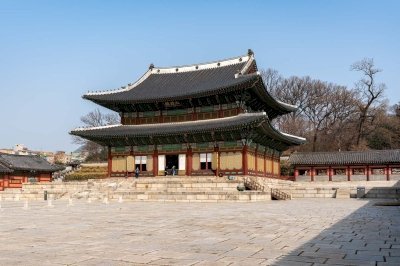
There are five royal palaces in Seoul and, although Gyeongbokgung Palace is the largest and most visited, it's Changdeokgung Palace that has been listed as the World Heritage Site. That's primarily because of its authenticity, as the one that is in the most original form and the first to be restored (by 1609) after being razed in the Japanese invasion. It was the seat of government for 270 years until the very end of the Joseon Dynasty.
My sense is that it's actually hard to tell the difference between the centuries-old restoration here at Changdeokgung and the more modern work at the other palaces. In a way that's good - they all 'look' authentic. But I find it a bit disconcerting because the Korean World Heritage Sites have a tendency to all look a bit the same and seem a bit too clean (to the point of almost being sterile). That's my main criticism here - that the buildings are all well maintained but it's hard to get a sense of how they might've been used or what life in the palace might've felt like.
The highlight at Changdeokgung Palace is probably the Secret Garden, with beautiful landscaping that follows the natural contours of the land and is interspersed with various pavilions and other buildings. You can only access it with a guided tour and I definitely recommend doing that. In busy months, it's worth booking in advance, although there are places that only become available on the …
Keep reading 0 comments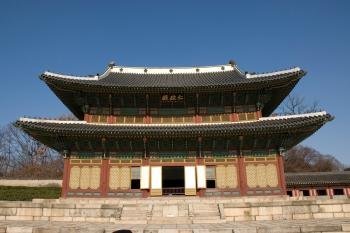
I visited this site in late 2007.
The Changdeok Palace sits in central Seoul and is an intact, impressive former seat of the Korean monarchy. Unfortunately, the palace seems rather sterile because all of the artifacts and furnishings have been removed. It is a collection of mostly empty buildings. Unlike most World Heritage sites, you can’t just buy a ticket and stroll about the grounds. You have to be with a tour guide, and tours leave about every hour/half hour in different languages. Tours last about an hour.
This, along with the nearby Jongmyo Shrine are the easiest world heritage sites to visit in Seoul.
Read more about the Changdeokgung Palace Complex on my website.
Keep reading 0 comments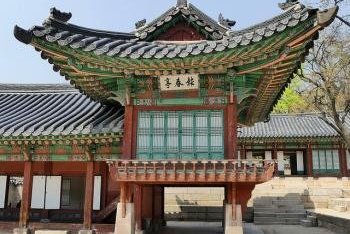
I visited this WHS in April 2017. Having visited all South Korea's WHS, I believe this is one of South Korea's highlights and truly possesses OUV.
Changdeokgung Palace can be visited freely without any tours everyday except Mondays (closed). On the other hand, the Rear/Secret Garden can only be visited with a 90 minute guided tour and can either be booked online in advance (recommended about 2 weeks before visit) or try your luck booking in person on the day.
I chose an afternoon visit as there seemed to be more people booked on the morning visits. I was lucky to visit on a lovely day during Cherry Blossom season. The tour guide gave quite an interesting tour without enough time for photos or for roaming freely whenever the tour was getting a bit boring. Another worthwhile possibility worth keeping in mind are the night time visits. I bought the combined palaces ticket which also includes entry to the Jongmyo Shrine and the Rear Garden.
Chang means prosperity and Deok means virtue. An inscription in the royal palace states that "Only through cultivation of virtue, should prosperity be attained" (referred to the king himself). The palace complex was the preferred palace of many kings in the Joseon dynasty. It served as the centre of administration for state affairs and as royal residence longer than any other palace in Korea.
It was built in 1405 but it was burnt down during the Japanese invasion of Korea in 1592 like all other …
Keep reading 0 comments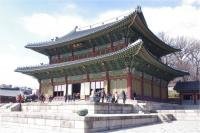
The Changdeokgung Palace is the finest example of Korean art and architecture. The building of this palace started in 1405 and was completed in 1412. It was used by many kings of the Joseon dynasty that added some elements to the original complex. The palace was completely destroyed by the Japanese and was rebuilt in 1609. Hit once again by Chinese, French and American, the complex has kept its original shape and plans. Today, 13 royal buildings are still in place in the complex as well as many others for servants the gardens.
The place is very amazing and is a great testimony of the Korean know-how in term of buildings, paintings and architecture, all that in balance with nature.
Keep reading 0 comments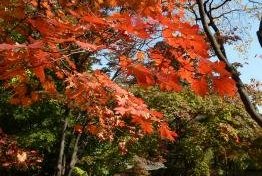
Palaces and me are not the greatest mix, as such I focused my visit here on the picturesque Biwon/ Huwon (Secret Garden) at the rear of the complex. I visited in autumn and the dazzling array of colours in the bright sunshine really made this a lovely place to stroll around and take an inordinate amount of pictures. I really enjoyed just sitting and relaxing next to the small pavilions overlooking the ponds and valleys that litter the gardens, reading a book and taking in the amazing foliage. Access to the Gardens was by guided tour but it was pretty relaxed and if you wanted to just slink off it didn't seem to cause any problems.
Thankfully the powers that be seem to have removed the need to visit the palace only on a guided tour, and now you are free to wander at your leisure. It was rather nice, reminding me of the structures I had seen at the Forbidden City the week before, but here the atmosphere was a little more tranquil.
All in all this was a nice place to spend a few slow hours admiring the wonderful trees, and as there is another WHS just across the road it makes a good place to get your fill of the royal roots of Seoul.
[Site 6: Experience 7]
Keep reading 0 comments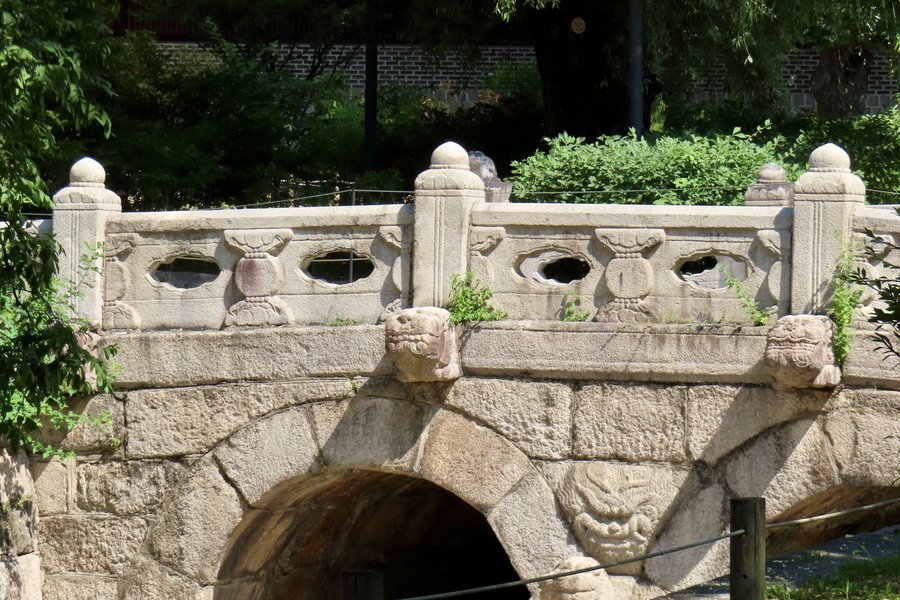
Changdeokgung is one historic site that suffers a bit from misinformation or at least quick judgement. One being too much restoration or lack of authenticity. Second, the garden is dismissed as forest-like with a couple pavilions and a pond. The later I will address more below. The authenticity questions is fair, yet its also complex. Changdeokgung is the best preserved royal palace in Seoul (by far) and much of the layout is intact. This cannot be said for Gyeongbokgung, or especially Changgyeonggung which suffered the worst indignities and to be frank clear evidence of cultural genocide by Imperial Japan. It is true, the majority of buildings at Changdeokgung Palace are restorations, though it should be understood approximately 1 in 3 are original to the rebuilt palace in the 1600's or from later periods of the Joseon Dynasty. Sadly, the Colonial Period put many Korean historic sites in a dire situation. They were already in dire shape at the end of the 19th century. The palaces (symbols of the dynasty and the Korean nation) were purposely and publicly demoted and some might say "polluted". It was not random chance the adjacent palace from Changdeokgung and Jongmyo that together made up a connected whole was turned into a zoo with rows of cherry blossoms, including Japanese-style garden features and structures. All since demolished or cut down. Therefore, the relatively intact survival of Changdeokgung Palace Complex is exceptional in that regard.
Representative Korean Garden?
The secret garden displays uniquely Korean aesthetics. One being …
Keep reading 0 comments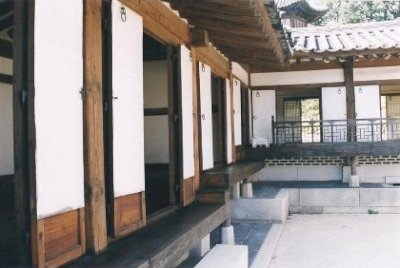
To be able to take a look inside I had to take part in a guided tour. Normally not my cup of tea, because the time is so limited and other people always get in the way of your pictures. That proved to be the case also this time, but I wouldn't have missed Changdeokung itself.
What I liked most - apart from the scenery - was the ondol, the heating system. Traditionally, Korean houses were heated by generating heat under their floors. This system can be seen clearly at Changdeokgung, and it comes with two delicately pretty chimneys too.
Keep reading 0 comments
